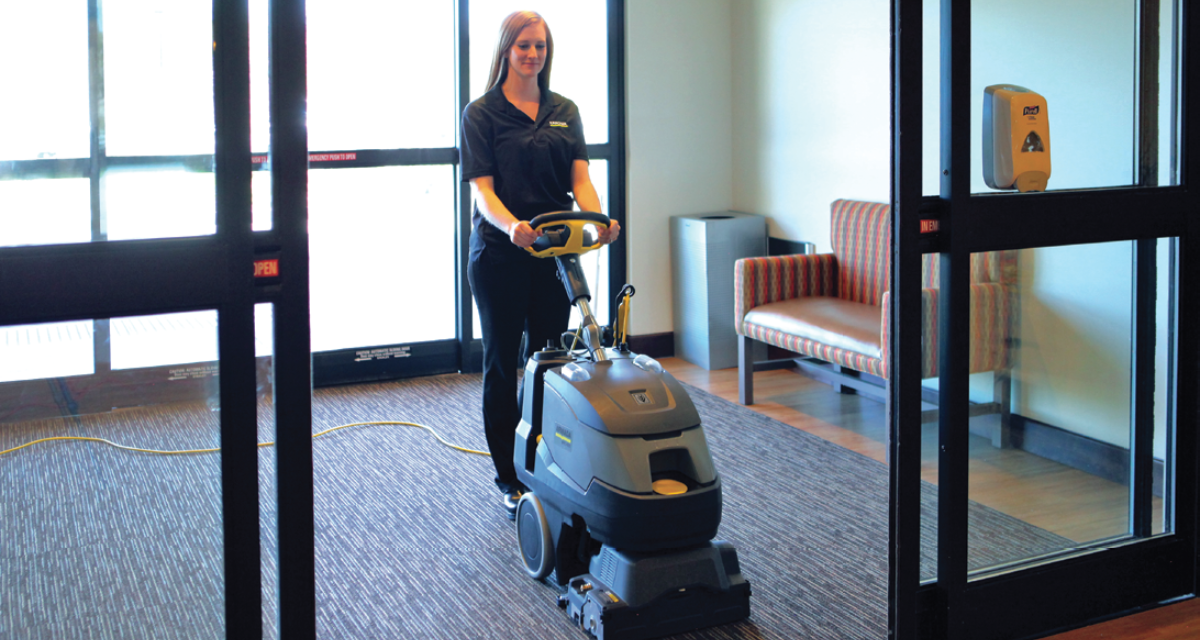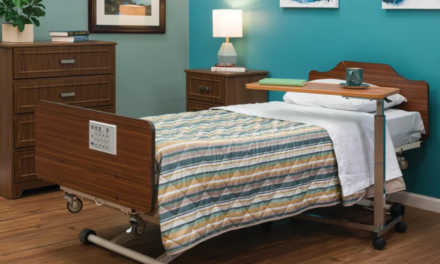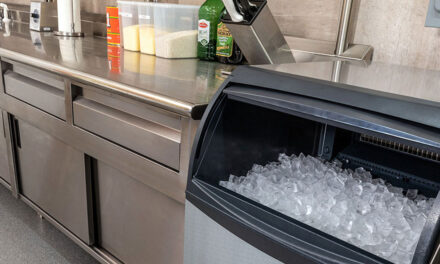Hospital floor care is critical to infection prevention, patient safety, and operational efficiency. Proper hospital floor cleaning reduces healthcare-associated infections (HAIs), enhances patient experiences, and boosts staff productivity.
Below are 10 common hospital floor cleaning mistakes and solutions backed by best practices and expert-driven insights from Direct Supply’s comprehensive healthcare floor care programs.
Why floor care matters for hospitals
Think of how many staff members, patients, and visitors walk across your floors every single day. Effective floor care is fundamental in hospitals for infection control, patient safety, and reducing indirect costs. Floors are among the most significant investments a hospital makes, and proper maintenance helps extend their lifespan and maintain their looks, positively influencing visitor perception and patient satisfaction.
Direct Supply’s comprehensive floor care solutions aim to improve operational efficiency, marketability, and floor longevity, ultimately lowering indirect product spend for hospitals.
Top 10 common hospital floor care mistakes
- Entryways that invite dirt
Your front doors might unintentionally welcome dirt, moisture, and germs along with visitors, creating hazards and extra work. Effective hospital floor care begins at entry points with hospital floor care matting.
Fix: Matting can help keep your hospital floor looking great by stopping dirt and moisture in its tracks. Deploy a trio of specialized mats—scrape mats, brush mats, and dry mats—for at least 15 feet at entrances. This may help absorb 75% to 85% of dirt and moisture from incoming visitors.
- Relying on traditional wet mops instead of microfiber
Traditional wet mops spread contaminants if mop heads and water aren’t changed frequently, impacting hospital cleanliness.
Fix: Switch to microfiber mopping systems for your hospital floors, proven to deliver 95% water and chemical savings, reduce cross-contamination, and achieve 99.95% cleaning effectiveness.
- Deferring preventive floor maintenance
Skipping over preventive maintenance leads to increased restorative cleaning costs and deteriorating floor conditions over time.
Fix: Adopt a consistent preventive maintenance schedule using wide-area sweepers outside entryways (up to 75 feet) and interior matting systems. Regular sweeping can significantly reduce the volume of dirt reaching your floors.
- Ignoring ergonomics in floor cleaning equipment
Physical strain from poor equipment ergonomics leads to staff fatigue, inefficiency, and increased turnover.
Fix: Invest in ergonomically designed hospital floor equipment, such as microfiber tools, backpack vacuums, and self-propelled autoscrubbers. This equipment reduces physical strain and boosts staff productivity and satisfaction.
- Overusing hospital cleaning and disinfection chemicals
Excessive hospital chemical use leaves residues, damages floors, increases costs, and poses environmental hazards.
Fix: Implement chemical-free autoscrubbing technology, utilizing electrically charged water, for daily cleaning in areas that are not considered high risk of exposure. This can reduce chemical use, environmental impact, and provides cleaner floors without residue. If you must use hospital cleaning chemicals, be sure to follow the manufacturer’s dilution guidance to maintain chemical effectiveness, minimize residue, and control expenses. Consider a clean water rinse with the autoscrubber after the initial clean. For more information on patient floor cleaning frequency, reference the CDC patient area floor guidelines.
- Using improper floor care equipment on sensitive flooring
Improper usage of floor equipment, especially burnishers on luxury vinyl flooring (LVT), can damage surfaces and void warranties.
Fix: Thoroughly train hospital cleaning staff on equipment specifics. Clearly label machinery and specify correct usage that warns against using improper floor care equipment on LVT.
- Lack of defined hospital cleaning and maintenance protocols
Inconsistent hospital floor cleaning and maintenance practices lead to compromised hygiene standards and inefficiency. Implementing schedules of hospital floor care around the following can help extend the life of your floors:
- Preventive Maintenance: Prevent dirt and moisture from entering hospital areas by strategically placing high-quality entrance matting and using wide-area sweepers regularly around exterior entrances.
- Daily Maintenance: Perform regular cleaning routines using efficient tools like microfiber mops, vacuums, and autoscrubbers to maintain a consistently high standard of cleanliness.
- Restorative Maintenance: Periodically conduct deep cleaning procedures, such as seasonal stripping, refinishing, and burnishing for hard floors, or deep carpet extraction for carpeted areas.
- Neglecting floor care equipment maintenance
Poorly maintained equipment doesn’t just underperform—it costs you money. Under maintained hospital floor equipment can diminish cleaning effectiveness and shortens lifespan, creating unnecessary operational expenses.
Fix: Routinely inspect, service, and maintain autoscrubbers, vacuums, sweepers, and burnishers, ensuring optimal equipment performance.
- Cleaning floors first
Ever notice floors getting dirty right after cleaning? Cleaning floors first allows dirt and contaminants from high-touch surfaces to settle afterward, resulting in redundant cleaning efforts.
Fix: Flip your cleaning strategy—clean high-touch surfaces first and floors last for maximum efficiency and cleanliness.
- Stretching floor care parts & accessories too thin
Neglected floor care parts and accessories can quietly sabotage your cleanliness. Worn microfiber pads, vacuum bags, and scrubber brushes significantly lower cleaning effectiveness, impacting hygiene and efficiency.
Fix: Establish a structured replacement schedule for consumables like microfiber pads, vacuum filters, and autoscrubber components. Direct Supply provides easy and reliable access to essential replacement items to keep equipment operating optimally.
Solve hospital floor care challenges today with Direct Supply
By addressing these common hospital floor cleaning mistakes with targeted solutions, hospitals may significantly enhance infection control, operational efficiency, patient safety, reducing indirect product spend and maximizing budget efficiency.
Discover Direct Supply floor care solutions today.




